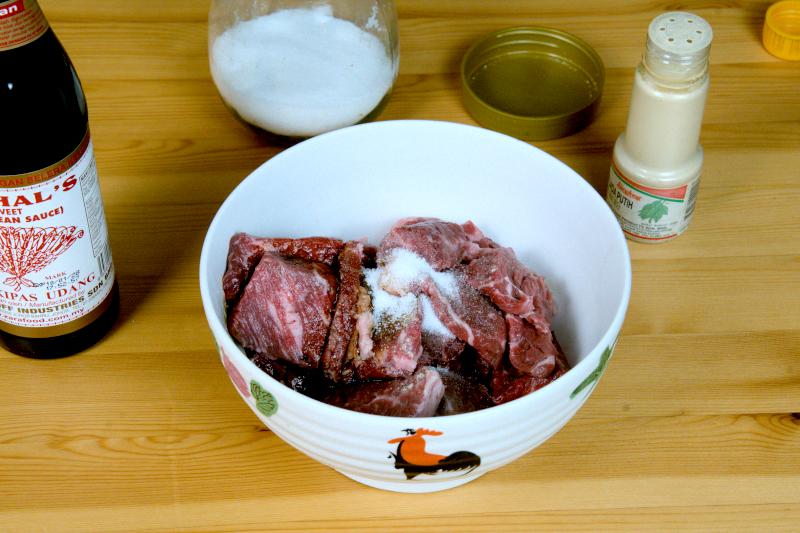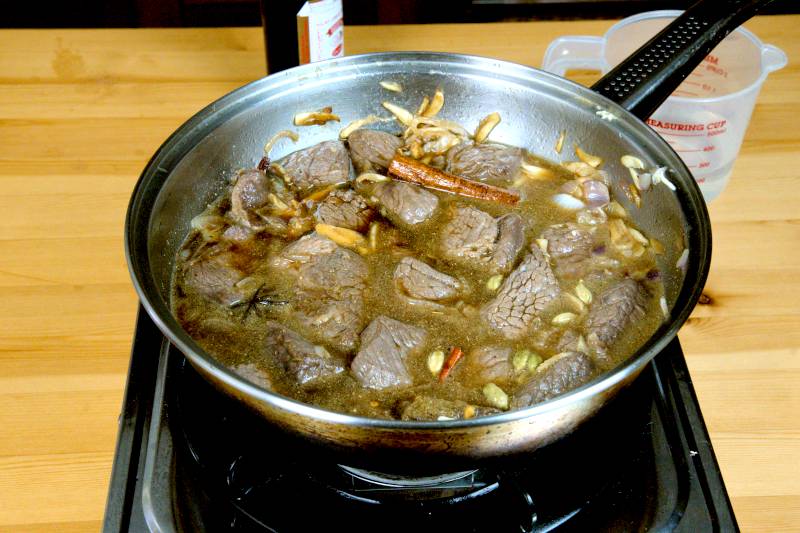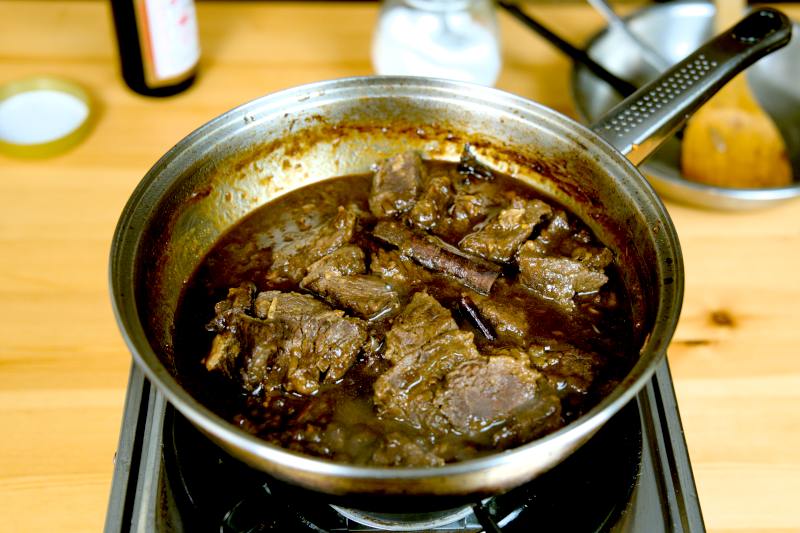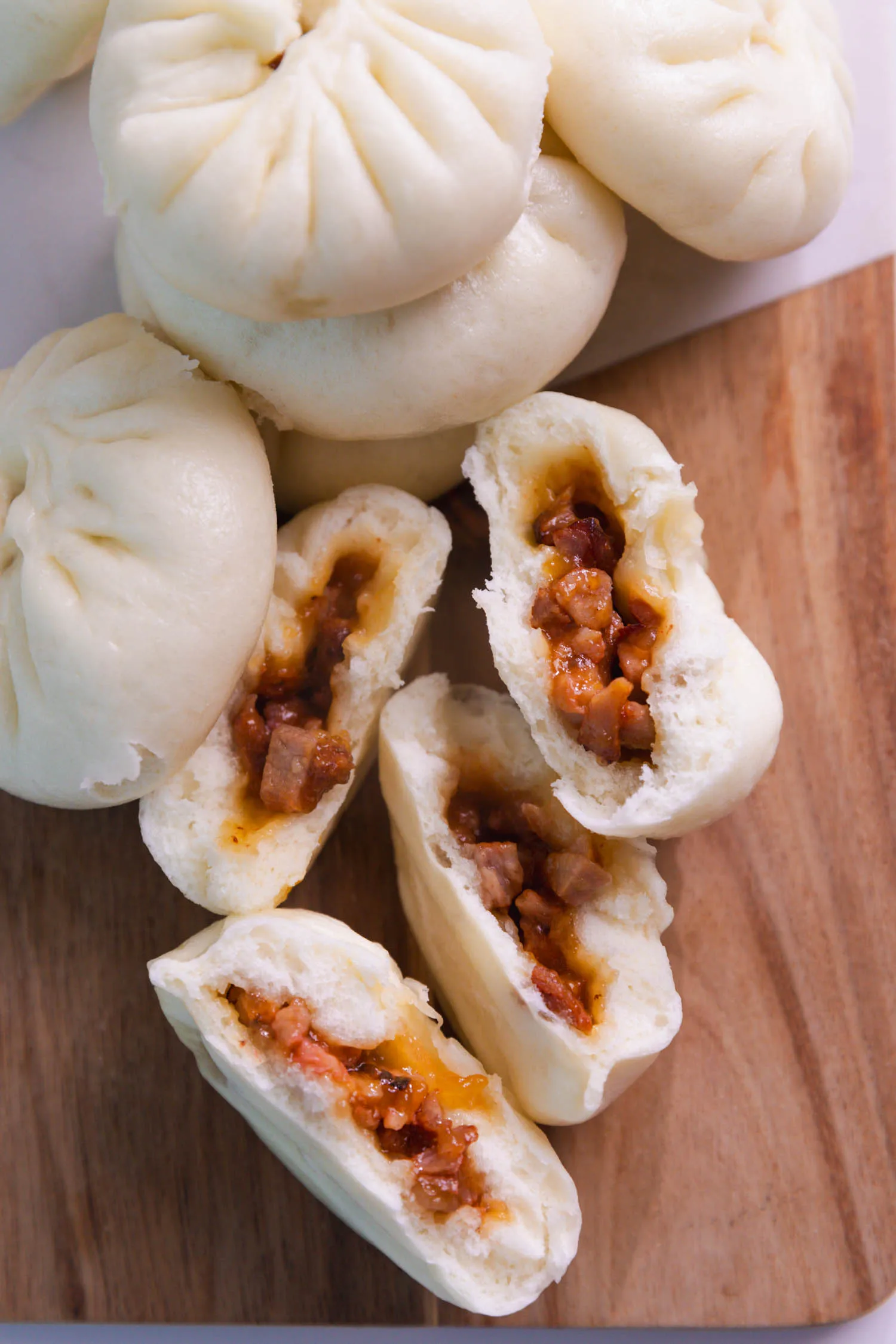Daging Masak Kicap is a traditional Malay beef stew renowned for its rich and savory flavor. I used to prepare this dish for my customers while operating my restaurant. Since transitioning to focus on my food blog, I haven’t made it in a while, but the taste has always remained vivid in my memory. Today, after picking up some beef from the supermarket, the inspiration to recreate Daging Masak Kicap struck me once again.
Daging Masak Kicap can be loosely translated as “soy sauce beef,” and is also commonly referred to as Daging Hitam Manis, with hitam meaning “black” in Malay. Once you see the finished dish, you’ll understand why; the beef takes on a deep, almost black hue after cooking.
I highly recommend trying this recipe due to its simplicity and the unique flavor it offers. It stands apart from Western beef stews and differs significantly from any Cantonese-style stews I have encountered. If you’re on the lookout for a recipe that introduces something new and exciting to your palate, this is the one.

The Main Ingredients Required to Make Daging Masak Kicap
- Beef: The ideal cut for this dish is sirloin, which ensures tenderness, though it can be pricey. Today, I opted for a more affordable cut—rump steak, which is also suitable for stewing.
- Sweet Soy Sauce: The most essential ingredient aside from beef is sweet soy sauce, known in Malay as Kicap Manis. I typically use the Habhal or ABC brand. This sweet soy sauce is distinct from Chinese light soy sauce or Japanese soy sauce; it’s thick, dark, and has a syrupy sweetness. Avoid substituting it with other soy sauces, as it will alter the dish’s flavor significantly.
- Spices: This recipe calls for several local spices, including fennel seeds, cumin seeds, tamarind paste, green cardamom pods, cinnamon sticks, dried chilies, and star anise. While variations may use different spice blends, this combination has served me well over the years.
How to Prepare Daging Masak Kicap
- Begin by slicing the beef against the grain into pieces approximately 1/2 centimeter (1/4 inch) thick. Avoid slicing too thinly, as it may break apart during cooking. Alternatively, you can cut it into small cubes. Marinate the beef with sweet soy sauce, sugar, and white pepper powder for at least one hour.
- For this recipe, I recommend using whole spices. I grind the fennel and cumin seeds, but you can use store-bought ground spices if preferred.
- Soak the tamarind pulp in warm water until soft to release its flavor. Strain the mixture through a fine-mesh sieve to extract the tangy tamarind juice, discarding the seeds and pulp. Fresh tamarind pulp is readily available in Malaysia, but you can use store-bought tamarind paste if needed.
- Heat vegetable oil in a pan and sauté the onion and garlic.
- Once the onion is soft and translucent, add the marinated beef to the pan. Incorporate all remaining ingredients as well.
- Add just enough water to barely cover the beef, then increase the heat to bring it to a boil. Once boiling, reduce the heat to the lowest setting and let it simmer for about two hours or until the beef is tender. Check the water level occasionally to prevent it from drying out, adding more water if necessary.
- After two hours, check the beef for tenderness. Continue simmering until the liquid reduces and thickens into a rich and flavorful sauce.
- Transfer the beef to a serving plate. It pairs wonderfully with light accompaniments like white rice, but you can also serve it with Biryani rice or flatbreads like naan.





How to Store Leftovers of Daging Masak Kicap
Daging Masak Kicap freezes exceptionally well, allowing you to prepare a larger batch and store the extra. Transfer the beef to a freezer-safe container for storage. It can be kept for several weeks without significant loss of flavor. If you plan to store it for just a day or two, place it in an airtight container in the refrigerator.
How to Reheat the Beef?
To serve leftover Daging Masak Kicap, thaw it at room temperature if frozen. Then, transfer it to a small pot, add a few tablespoons of water, and reheat over medium heat until it reaches a boil. Continue simmering until the sauce thickens to your desired consistency, and then serve.
Can I Cook It in a Pressure Cooker to Simplify the Cooking Process?
Absolutely! You can use a pressure cooker to significantly reduce the stewing time. Pressure cook the beef for 35 minutes and allow the pressure to release naturally. Afterward, there will likely be a considerable amount of liquid in the pot. Remove the beef with a slotted spoon and set the cooker to sauce thickening mode to reduce the liquid. Finally, mix the beef with the thickened sauce before serving.





